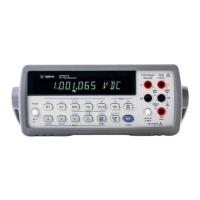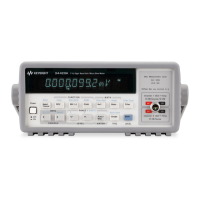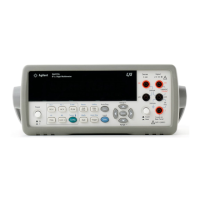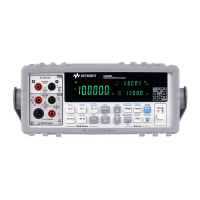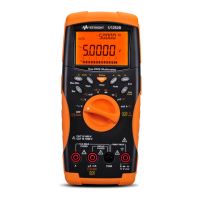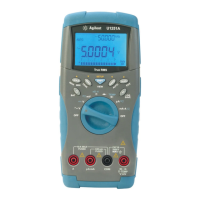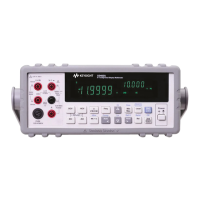92 Chapter 4 Making Measurements
Reading Formats
This section discusses the ASCII, single integer (SINT), double integer
(DINT). single real (SREAL), and double real (DREAL) formats that can be
used for storing readings or for outputting readings on the GPIB. Storing
readings in memory is described later in this chapter under "Using Reading
Memory"; outputting readings on the GPIB is discussed later in this chapter
under "Sending Readings Across the Bus".
ASCII The ASCII format is 15 bytes per reading encoded in scientific notation in
standard units of volts, amps, ohms, hertz, or seconds as follows:
SD.DDDDDDDDESDD
Where:
S = sign (+ or -)
D = 0-9
E = delimiter between mantissa and base 10 exponent
Single and Double
Integer
The single integer (SINT) format has 2 bytes per reading and the double
integer (DINT) format has 4 bytes per reading. Both formats use two's
complement coding.
Note When using the SINT or DINT memory/output format, the multimeter
applies a scale factor to the readings. The scale factor is based on the
multimeter’s measurements function, range, A/D converter setup, and
enabled math operations. You should not use the SINT or DINT format for
frequency or period measurements; when a real-time or post-process math
operation is enabled (except STAT or PFAIL); or when autorange is
enabled.
Two's Complement
Binary Coding
Two's complement binary coding is a method that allows a binary number
to represent both positive and negative integers. Two's complement coding
is done by changing the sign and, in effect, the decimal equivalent of the most
significant bit (MSB). When the MSB is set (1), in a 1 byte two's complement
number, its value is 1
´ -(2
7
) = -128. When the MSB is reset (0), its value is
0
´ -(2
7
) = 0. Note that the range of an 8 bit, 1 byte two's complement number
is -128 to 127, not 0 to 255.
The following example resolves the decimal equivalent of this two's
complement word:
10110101 10010110
This two's complement word is equivalent to:
–(2
15
) + 2
13
+ 2
12
+ 2
10
+ 2
8
+ 2
7
+ 2
4
+ 2
2
+ 2
1
Which evaluates to: –19050
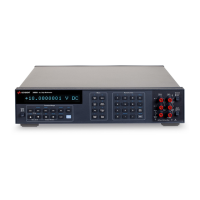
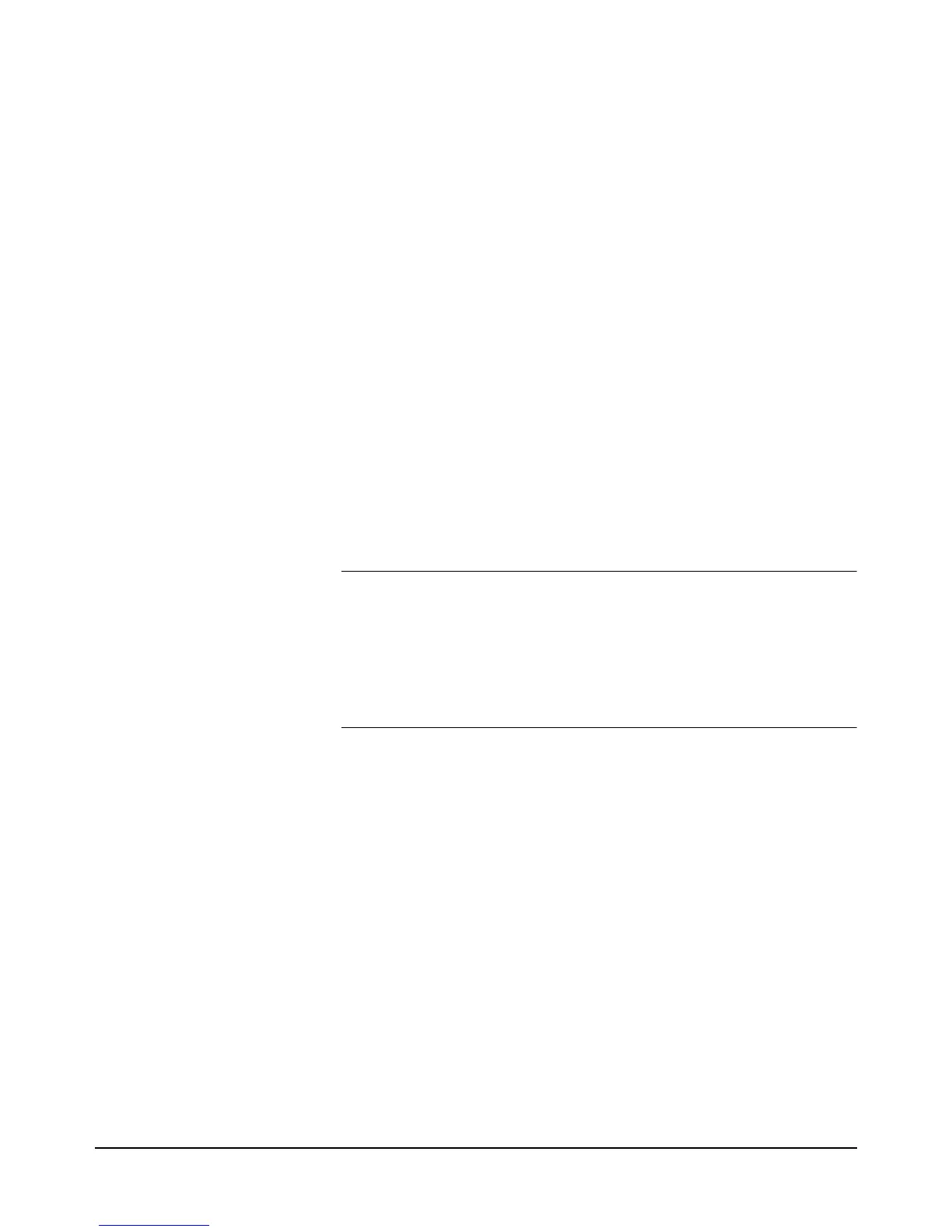